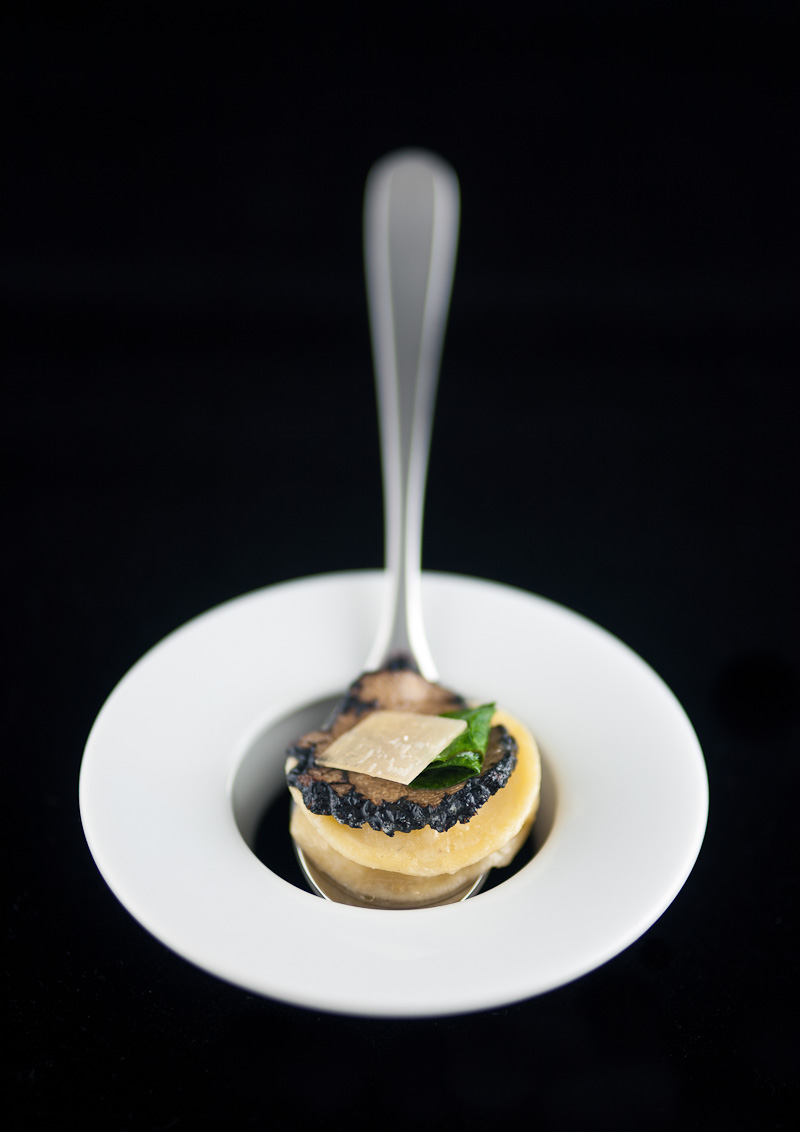
My previous odyssey with black truffles, which involved making about 1kg of truffle juice, was put to good use for this one. This relatively-unassuming little ravioli is one of Alinea’s powerhouses and is Chef Achatz’ signature dish. The idea is actually very simple and straightforward; a small ravioli is topped with a slice of black truffle, romaine, and parmesan cheese. When you bite into it, the ravioli pops open, squirting warm black truffle juice and butter. It is extremely, extremely luxurious.
How does one make a ravioli filled with liquid? I’ll tell you! It involves a bit of slap-me-in-the-forehead common sense. Using the truffle juice I made in the Chicken Skin dish, I made a mixture of the juice, butter, truffle oil, and gelatin. The mixture is poured into hemispheric molds and left to set for a few hours.
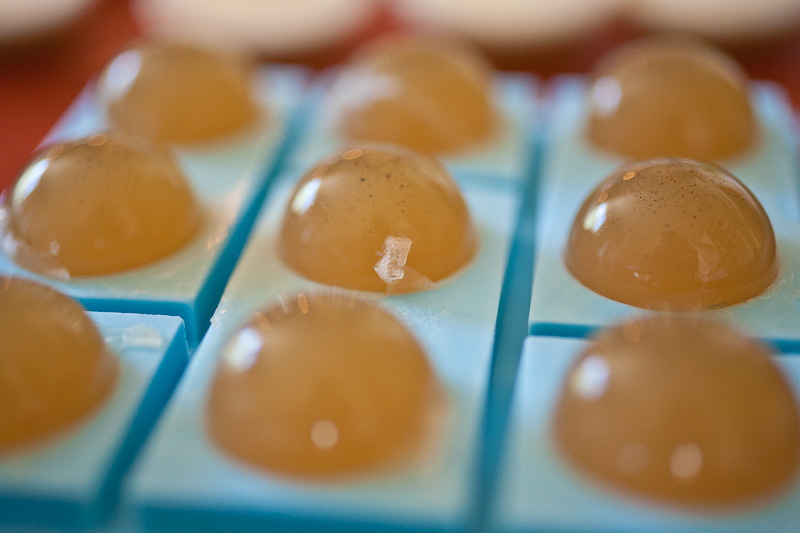
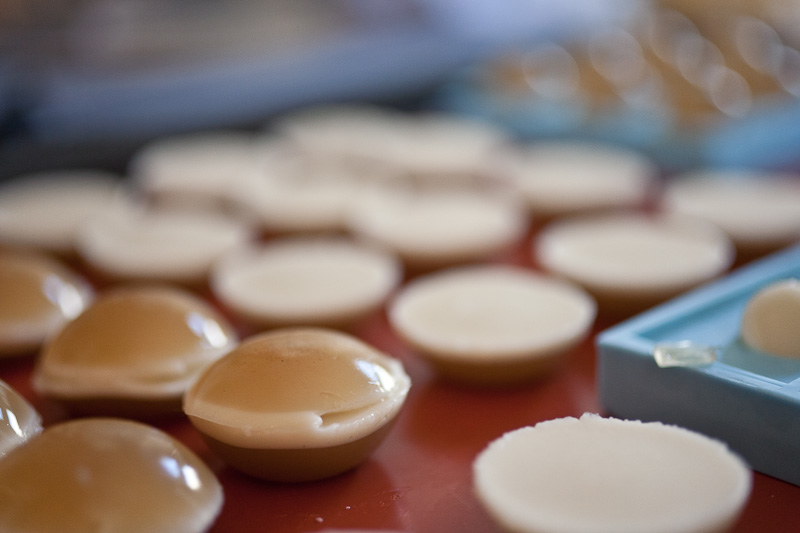
During the setting process, the butter rises to the top before hardening. The two half-spheres are popped out of the molds and sandwiched together to make a sort of almost-sphere, eye-shaped puck of black truffle and butter. Because I had quite a bit of truffle juice, I filled almost all the molds I have, which gave me spheres of various sizes and shapes. This made for some good science!
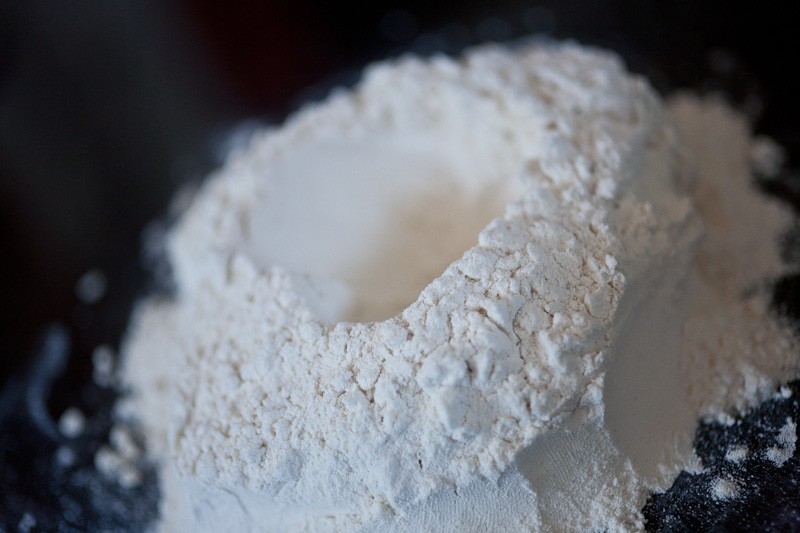
After making the spheres, I made the ravioli dough. I started with some italian “00” flour, which is extremely finely-ground wheat flour. It has the texture and feel of talcum powder, which ultimately yields a very smooth, delicate dough.
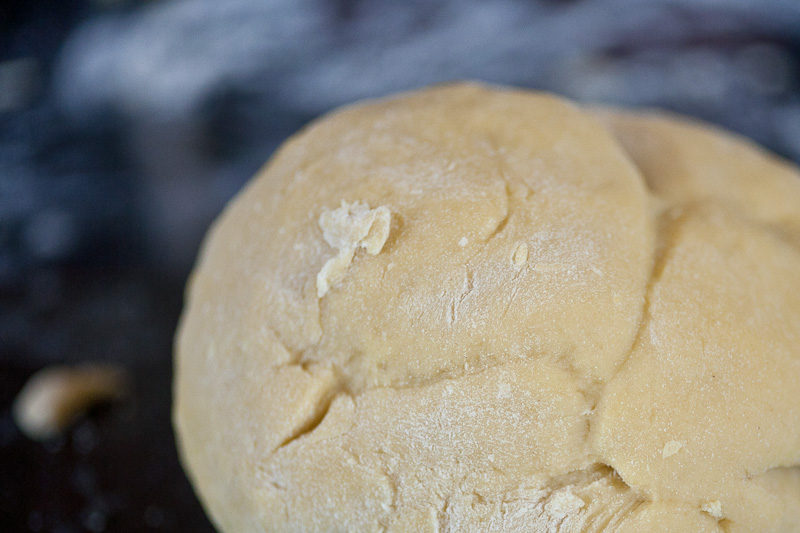
After mixing in some eggs and oil, I let the dough rest for a while. Then I hauled out this dough-roller that Sarah got me for my first birthday with her. Turns out it is a totally awesome gift even still!
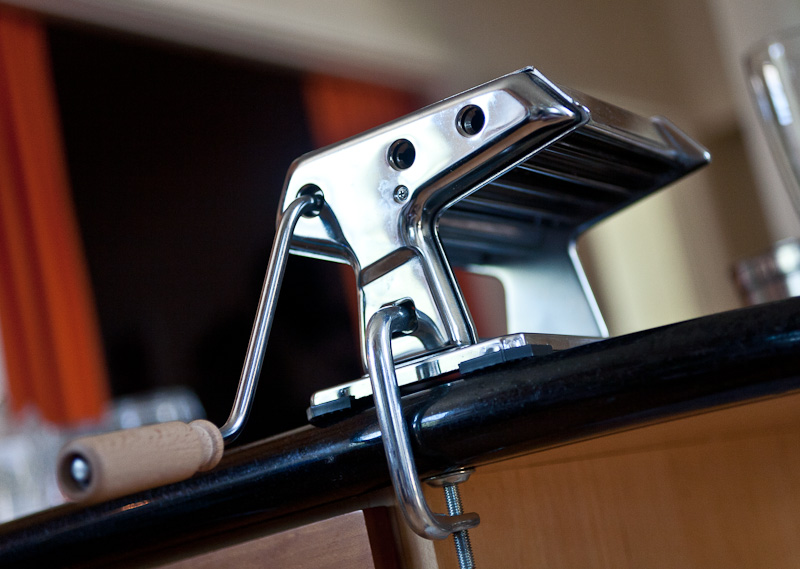
The pasta roller has an adjustment knob that controls how much distance is between the two main roller cylinders. The idea is to roll the dough through at the widest setting, flour it lightly, turn down the knob a click, and repeat. The final thickness of the dough for this recipe was about as thick as an envelope, which ripped very easily and was really tough to work with. So, I made a few batches that were a click thicker, which made things much easier to deal with.
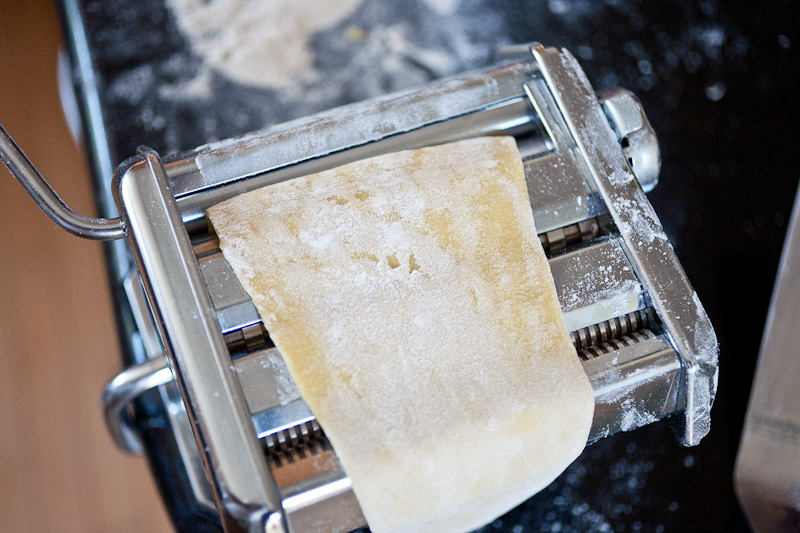
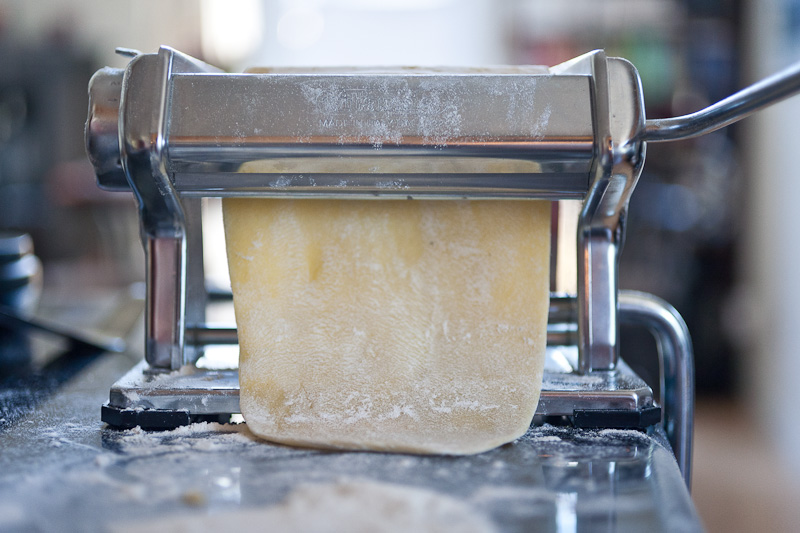
After rolling out the dough, I painted it with an egg wash and placed the truffle spheres on it. I draped another piece of dough over the top, and pressed it around the spheres with my fingers to shape it as closely to the sphere as I could. Then I sealed and cut out the ravioli.
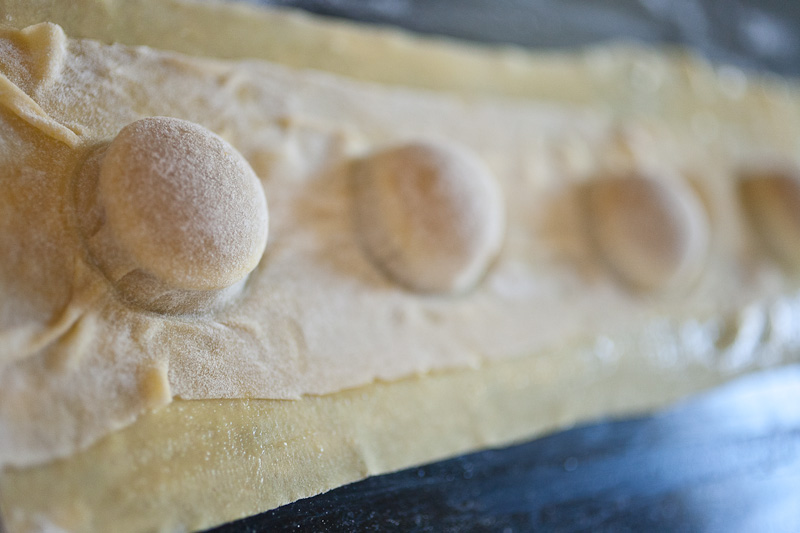
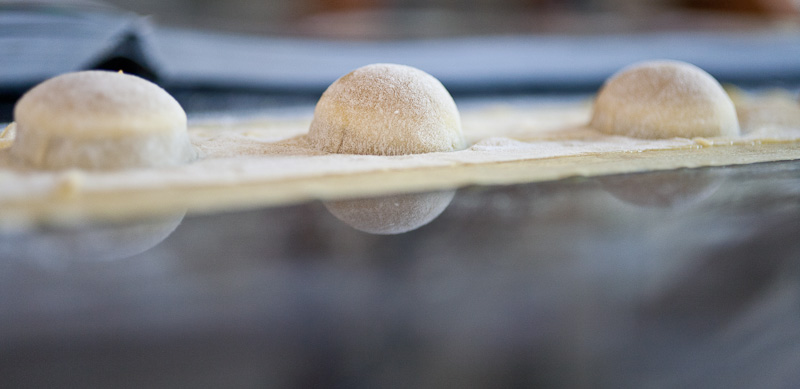
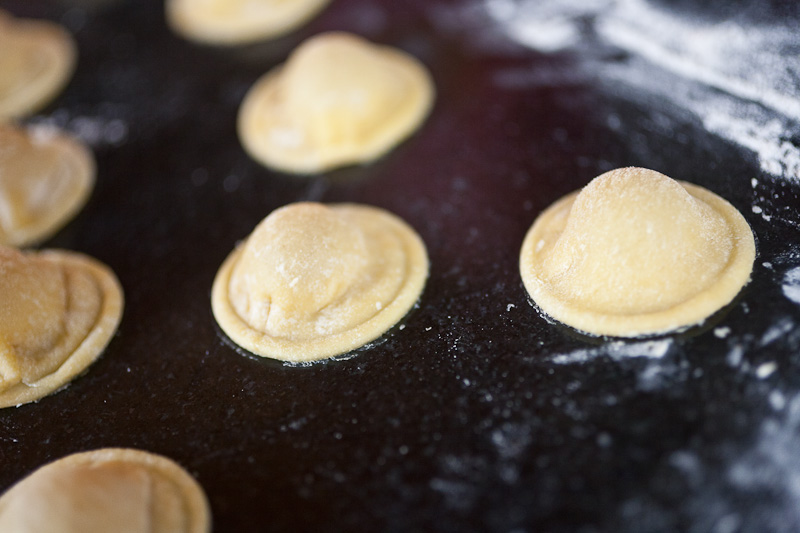
The ravioli is topped with a slice of black truffle cooked in beurre monte (which is a sauce made simply of butter and water). For a second time, I trekked into the city to visit Far West Fungi. This time I was armed with a leftover styrofoam container from my shipment of canned truffles a few weeks ago. This thing worked beautifully for keeping my newly-purchased truffle cool, even though I looked a little like am EMT carrying around a donor organ.
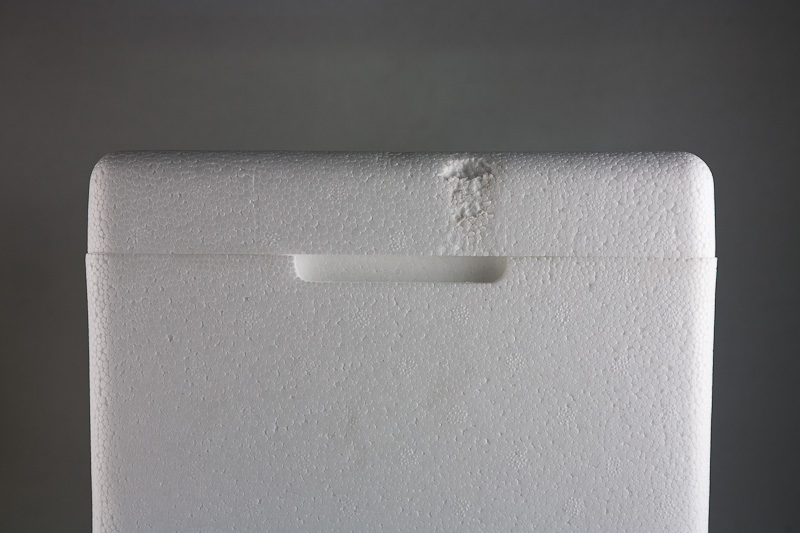
My second truffle was even more awesome than my first, either because it was legitimately more awesome or because I’m more sensitive to the nuances of it (either way, I’m happy). I sliced it on my mandoline, which has a serrated blade…hence the funky striations.
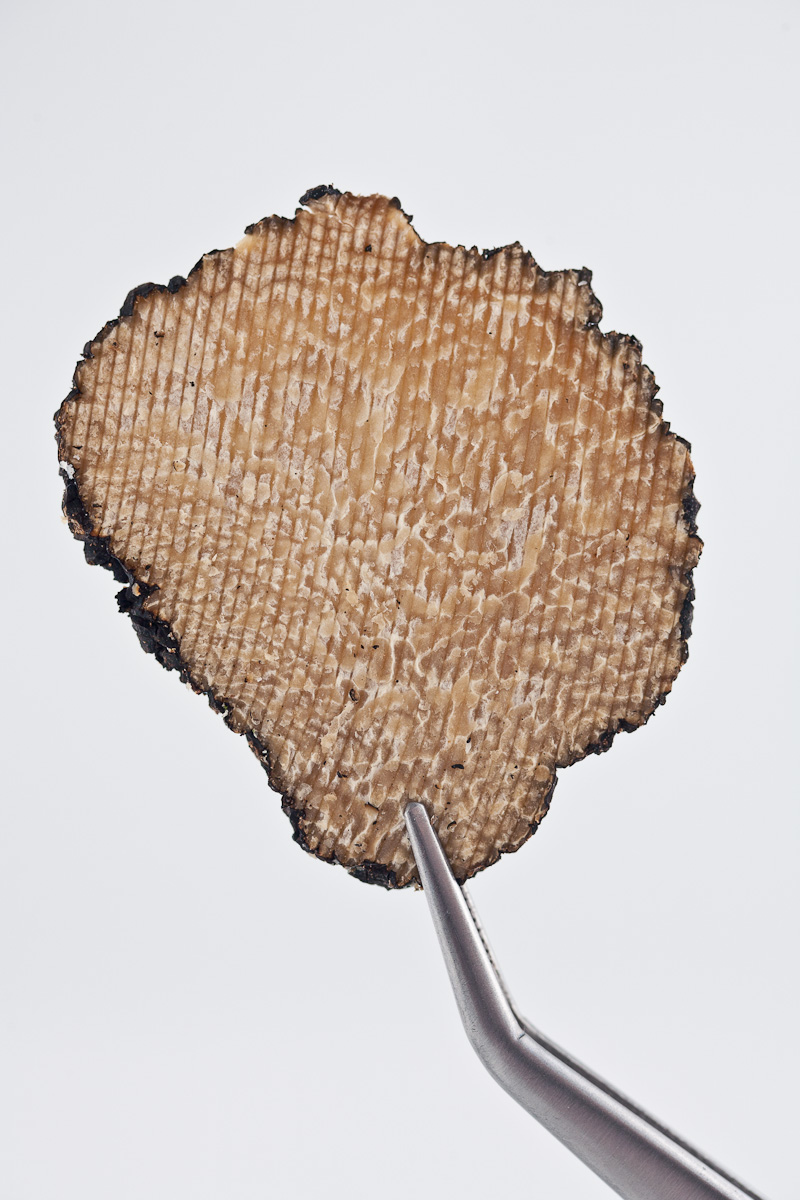
Along with the truffles is a bit of romaine, which has been cut into strips and wilted in the butter/water sauce.
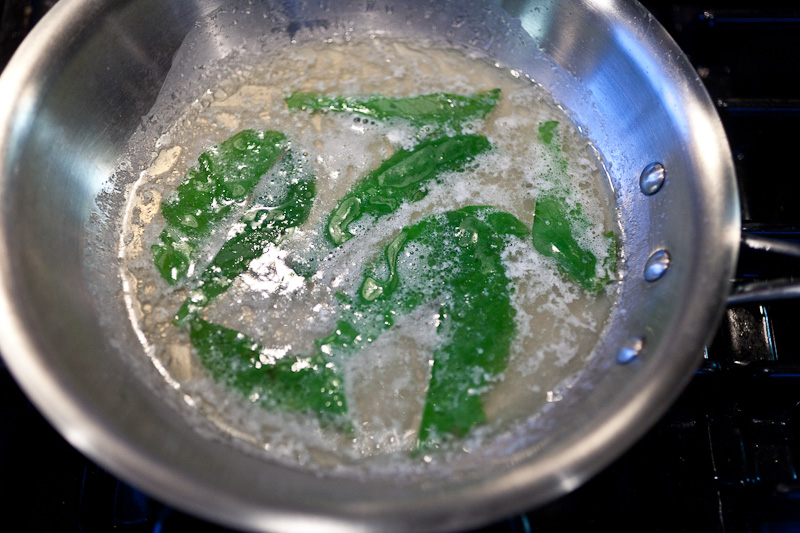
Finally, the ravioli is simmered in water and quickly warmed in the beurre monte, then topped with the truffle slice, a neatly-folded strip of romaine, and a square of the parmesan.
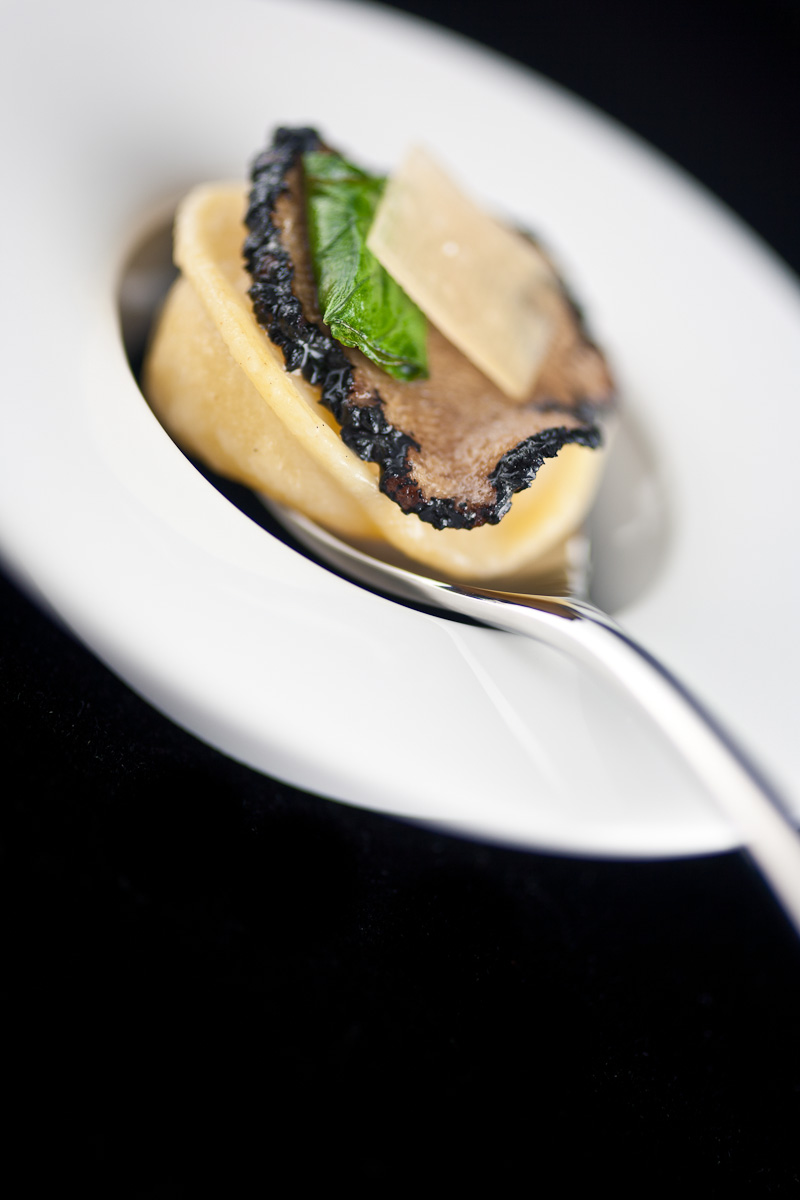
The subject of truffles is a hotly-debated one in our household; Sarah thinks white truffle oil is the most disgusting thing on the planet. I, as an aspiring learner of all things food, have come to enjoy it while recognizing that white truffle oil is a fairly loud, one-note song. When I suggest things involving truffles to Sarah, then, she pictures white truffle oil and is immediately on guard. So it was when I told her I was making this, and as I brought her a plated serving I was a bit nervous as to how she’d react.
She took the whole bite in her mouth, chewed thoughtfully and slowly, and swallowed. She licked her lips, looked at me solemnly, and said “That. Was the best thing you’ve made.” Sure, she says that about pretty much all of these, but I still considered this a special victory, and not only for her. In learning about truffles I think I have an understanding that white truffle oil, while not amazing and not the devil, is a very one-dimensional ingredient that fails to capture the subtle nuance of fresh truffles. It is that realization that I feel Chef Achatz likely wants to expose diners to in this dish. There is complexity and simplicity and ethereality to this…it’s indescribable and also comfortable and familiar. Sarah feels the warmth of it helps a lot…it’s like something is hugging your tongue. Given what this turned out tasting like with the ingredients I used (summer truffles instead of the much more expensive–and out of season–winter truffles), I’m extremely curious to work with proper winter truffles and even a white truffle.
Gotta work a bit of overtime to get up to that though.
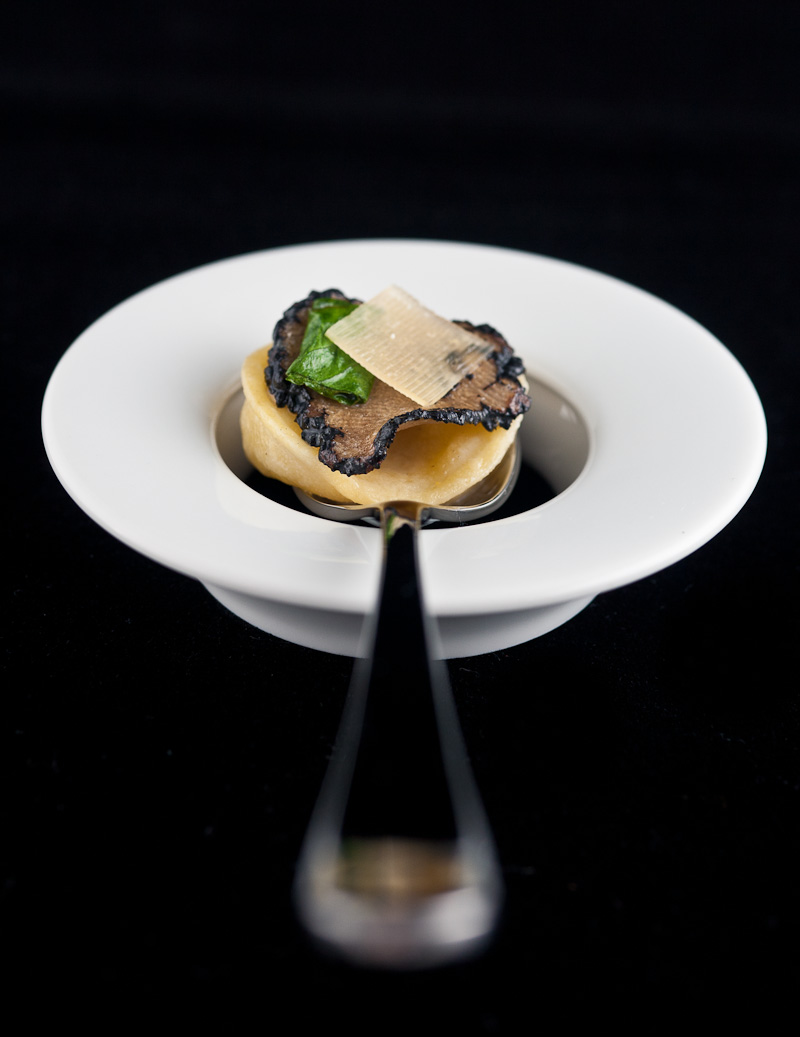
Seriously, next time you’re having trouble finding something, let me know.
By the way, commenting isn’t available on some of your posts (including the other truffle one). Is that by design?
Hey David! Dang, I didn’t even think to ask you about it, sorry. I totally should have though. Damn.
Also, re: the comments…hm, nope, not by design! I’ll have a look and see what might be amiss.
When’s the next lazy bear?
Your truffle posts have been very good reading. I was talking to a former fellow grad student from my department recently about Alinea. He and his then fiancee went there when they got engaged. Between his descriptions and your posts, I think I’ll have to start saving up.
What kind of pasta roller are you using, and would you recommend it? I’ve made pasta a few times rolling it out and cutting it by hand, and it turns out all right but is still very, very ugly. The first issue of Lucky Peach has inspired me to make my own ramen noodles, and I *need* a machine for that. Apparently, the alkalinization of the dough with sodium carbonate makes it impossible to work the dough by hand.
Hi Katie!
I don’t remember the brand name of my pasta roller off the top of my head, I’m sorry! It’s an italian-brand one that Sarah bought for me in New Zealand. The manual is completely in italian…no english at all. It seems to be a pretty simple, straightforward machine…just a bunch of metal cylinders and a crank handle. It’s pretty heavy. I guess I’d recommend it, in that it makes pretty fine pasta, though I find it hard to hand-crank while feeding dough through, and I’m itchy to try the attachment Kitchenaid makes for their mixers (which, as a baker, I’m sure you’re familiar with)…mostly because it seems more convenient.
I do find that usually I have to pass dough through each thickness setting twice…especially at first. If the dough is sticky, I get this ripping/mottled looking effect that produces holes and looks kinda bad. But passing the dough through again a few times usually fixes it, and then as I move thinner and thinner it gets better. You definitely can’t start on a thin setting though…always start at the widest setting and then lower the thickness by 1 notch each time you pass the dough through subsequently, until you get it down to the thickness you need. I also find that the thinnest setting on my pasta machine produces such a thin sheet of dough that I can’t really use it…it’s too delicate and/or I’m too clumsy. 🙂
Thanks for the advice, Allen. I’ll be moving into a new, bigger (yay!) kitchen very soon, but I think that just to economize on space, I’ll probably end up with the Kitchenaid attachment. I’ll let you know how it performs once I get my hands on it.